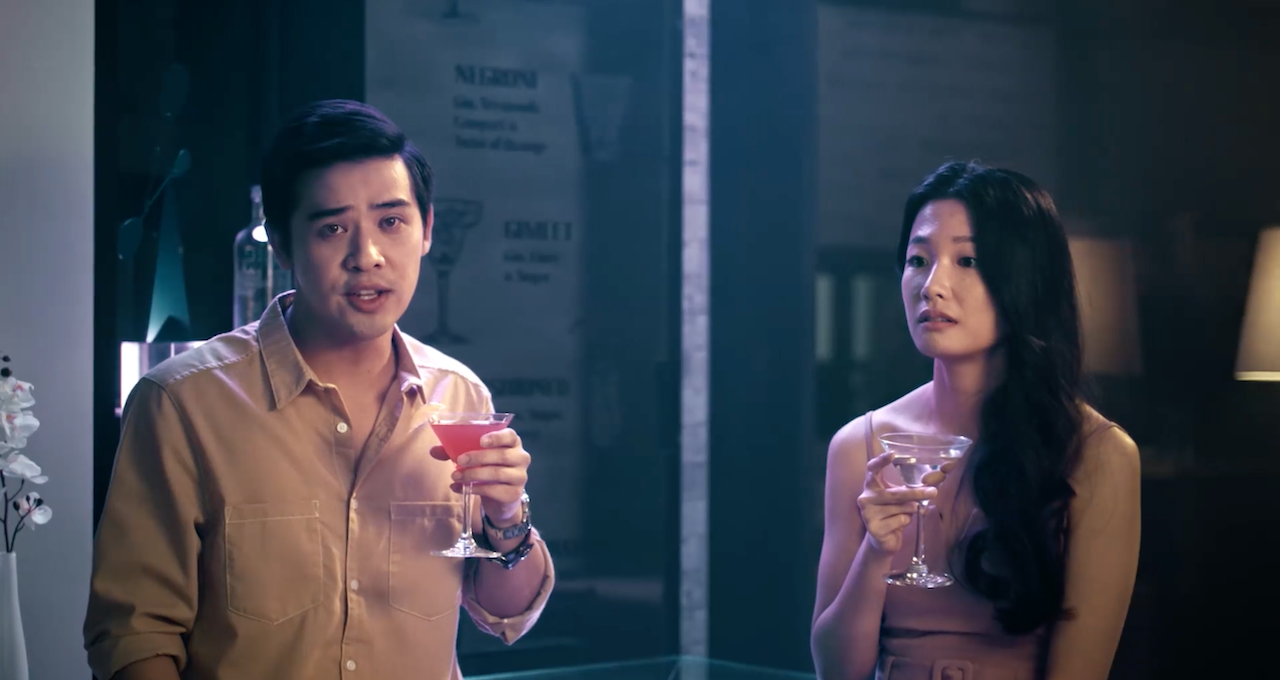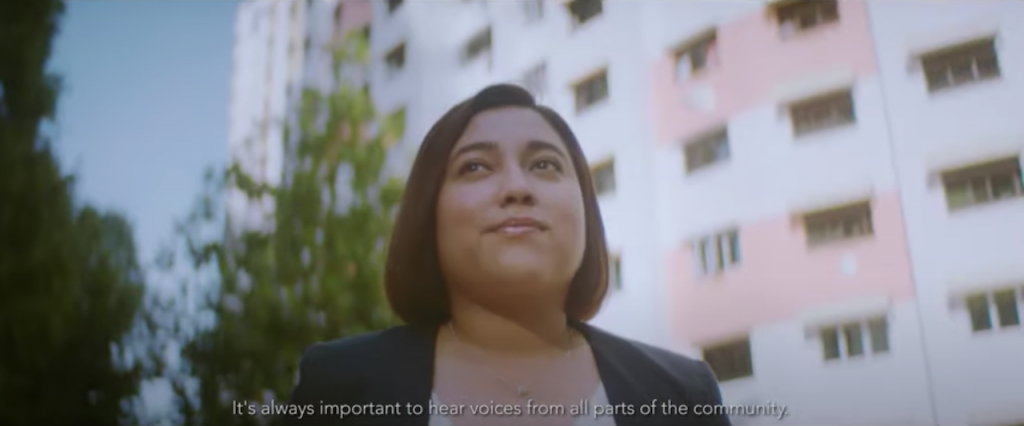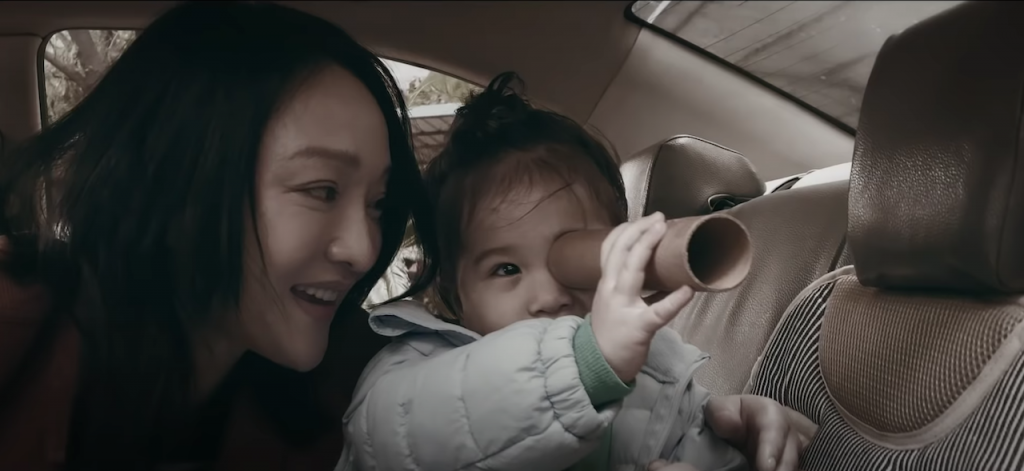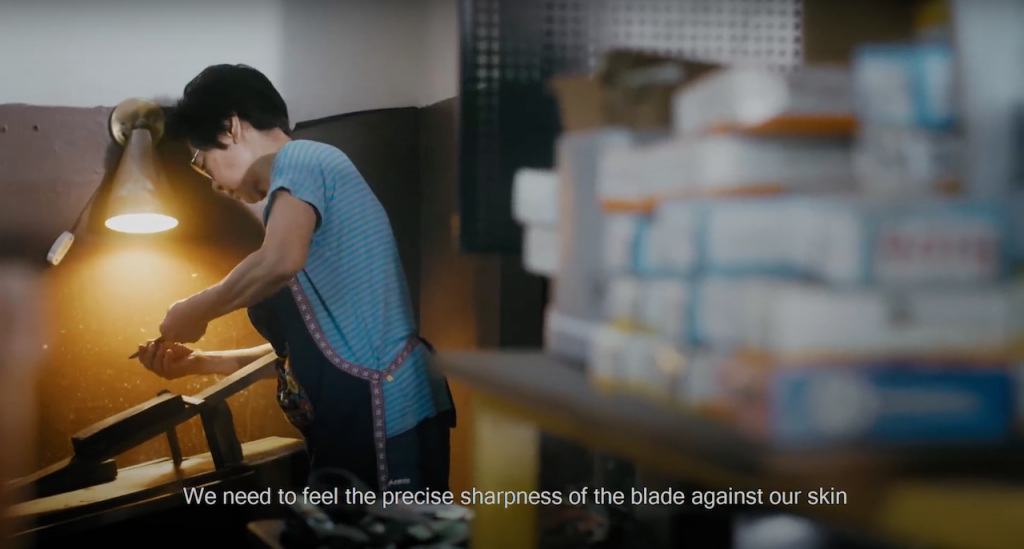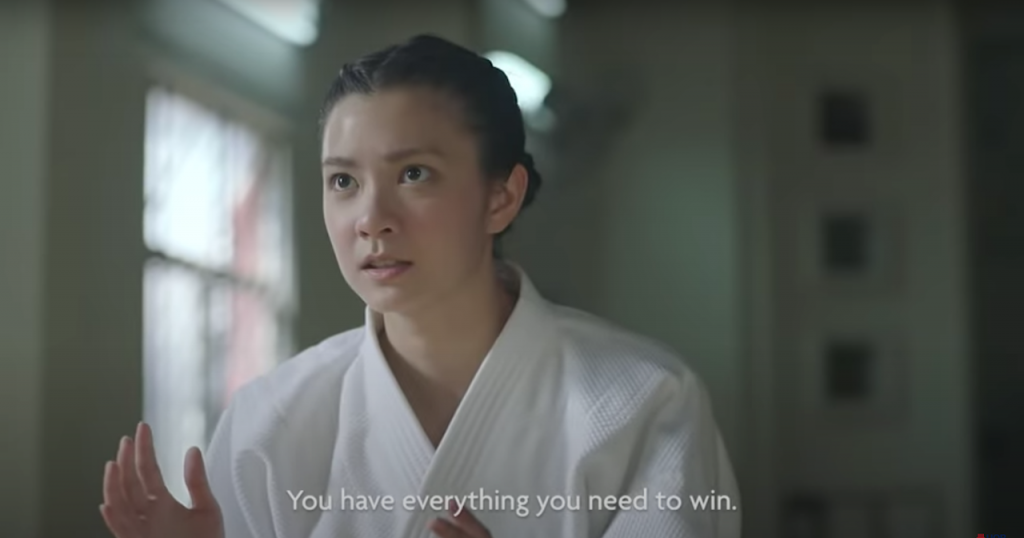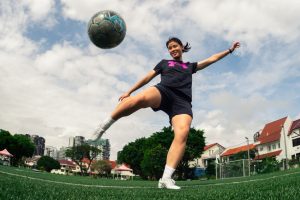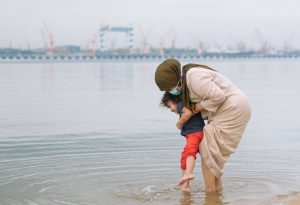We open on Shaza Ishak, a young woman who runs the Malay theatre company Teater Ekamatra. In a voiceover, Shaza talks about the meaning she has found in bringing minority voices to the stage. While her work requires her to sacrifice family time, she ultimately accepts the trade-off in exchange for creative fulfilment and societal change.
This Singtel ad, titled “In Return”, played in Singapore in 2019. If you’d seen it, it might not have struck you as remarkable. After all, its narrative, about a driven female business-owner, shouldn’t be groundbreaking.
Yet in the landscape of local advertising, “In Return” is a rare gem. We’re more likely to see ads like the recent one for new residence Uptown@Farrer, featuring a condescending, self-centered man and his beleaguered pregnant wife—an ad that has been called misogynistic and reductive by members of the public and industry leaders alike.
Portrayals contained in commercials are important to analyse for two reasons.
First, media portrayals are drawn from society at large—they are often reflections of prevailing cultural values. Second, these portrayals likely play an active role in socialisation—i.e. men and women may take cues from media portrayals on how to act out their masculinity and femininity.
When they rely on traditional gender roles, advertisements maintain hierarchical gender relations. But when they portray men and women as equals, our ads may provoke society at large to imagine a different—more just—world.
Recently, gender-equality organisation AWARE and marketing consultancy R3 Worldwide embarked on a project to analyse gender portrayals contained in Singapore commercials. We looked at 200 television advertisements spanning a range of industries, including telecommunications, financial services, beauty and government. They were produced by Singapore’s top 100 advertisers, and broadcast in Singapore between 2018 and 2020. From this sample, we aimed to develop a snapshot of gender relations in Singapore today.
We set about identifying a shortlist of ads that could serve as exemplars for gender equality. While guidelines on gender portrayal have been published for advertisers in other countries (e.g. by the Advertising Standards Authority in the UK), there has been no such endeavour in Singapore. We therefore hoped our list would give local advertisers a nudge to think more critically about their own depictions of gender.
First, we tallied men and women in lead and supporting parts across the 200 ads to derive a ratio of male to female characters. We also listed out some common roles relating to gender and power—such as “expert/novice” or “saviour/saved”—and tallied the characters who fell into those roles. Finally, in evaluating individual ads, we considered their treatment of gender stereotypes, beauty standards, violence against women, and sexual objectification.
Our first exercise, meant to indicate representation, was immediately disappointing. The 200 ads featured 23% more male lead characters (179 vs. 146), and 8% more male supporting characters (328 vs. 304), than female.
Branching from there into gender roles, we found that ads were 48% more likely to depict men (62 ads) than women (42 ads) as having paid employment of some sort.. In reality, men do outnumber women in the Singapore workforce; however, the difference in male and female labour force participation is not nearly as wide as the above would imply.
A few ads stood out to us for their portrayals of working women, especially in male-dominated fields. A favourite was Apple’s “Daughter”, which sympathetically tells the story of a single mother eking out a living as a cabbie while toting her young daughter along.
Another high-scoring ad, Vaseline’s “Visible Scars, Invisible Strength”, features 71-year-old Lee Hwee Chin, who overcame discrimination as a blade-sharpener for 40 years.
“[Customers] compared me against my father and felt I was not as skilled,” Lee confesses. It’s inspiring to observe Lee’s evident skill, and hear her describe her scarred hands not as disfigurement but a representation of professional “achievement”.
Even so, these high-scoring ads reveal an unfortunate pattern: When women’s careers are spotlighted, their work is always shown alongside sacrifice. Lee’s trade is physically demanding, and presumably low-paying; though elderly, she mentions being “unable to stop work”. For Apple’s single-mum cabbie, work comes into conflict with her parenting. On the other hand, men in our ads were comparatively free to pursue their careers without the suggestion that they were taking time away from family.
This difference, coupled with the exaggerated lack of working women in our ad set, drives home the antiquated idea that women don’t belong at work—they belong at home.
The pastimes enjoyed by women in our ads tended to be things like shopping and dining: stereotypically “feminine” hobbies that require little in the way of physical exertion.
Only a few ads made an effort to think outside this box. A FWD ad entitled “My Girlfriend’s Such a Fighter” centres on a female boxer valiantly fighting cancer as her boyfriend looks on. The UOB ad “Black Belt” features a girl who trains hard at judo under the coaching of her father, eventually winning a medal.
Both these ads revolve around women’s physical and psychological strength. Neither places the focus explicitly on the protagonists’ gender, but their subtext—of women facing adversity with the support of the men in their lives—is clear.
When it came to body image, we hoped to see ads that featured, in a positive light, women with diverse sizes, skin, hair, and other attributes. This would have reflected more accurately the realities of female physique and appearance—the normalisation and celebration of which have been shown to increase viewers’ self-acceptance and confidence.
Instead, the vast majority of ads featured slim, fair-skinned and pretty women, sometimes coupled with more homely/plain-looking men in a clear display of gendered double standards.
Again, only a handful of ads distinguished themselves here. For example, Apple’s “Behind the Mac” is a simple, powerful montage of well-known female artists and leaders, from Lady Gaga to Malala Yousafzai, who all look distinctively radiant in their own skin.
Meanwhile, Singtel’s “GOMO feat. Preetipls” is shot through with the body-positive local entertainer’s signature mix of glamour and satire. With the full-figured Preetipls doing sultry beach yoga in the manner of skinny Instagram influencers everywhere, or comically sporting a fake unibrow, the ad defiantly flips off the rigid beauty standards that would typically cast its star as the butt of a joke (if it cast her at all).
The ad that performed best in this category belonged to Dove. In “Rachel’s Story”, a woman with eczema talks openly about learning to be proud of her skin, after years of disparagement from others: “I look at every mark on my body as … a point where I’ve gotten through the pain and I’ve come out stronger.”
The ad’s no-frills authenticity stands in stark contrast to the relentless parade of perfect-skinned models that typically star in beauty campaigns.
What else did our study reveal about gender in Singapore?
We found a number of ads to lean on cringeworthy clichés, portraying men as romantic aggressors, heroes or omniscient beings, and women as romantic conquests, damsels in distress or ignorant neophytes. Indeed, there were 2.5 times more ads (35 vs. 14) depicting men providing knowledge—e.g. teaching others or answering questions—than the equivalent for women. This despite the fact that ads depicted men and women receiving knowledge at around the same rate.
What’s more, this knowledge provision isn’t always polite. One egregious ad shows a sternly patronising father explaining mobile banking to his ditzy, vain daughter. In another, a woman is scolded—at length, with expletives—by a disembodied male voice for wasting food.
One particularly discouraging ad took an approach that explicitly pits women against men, in a simplistic and unproductive way. A frazzled housewife immediately flies off the handle when her husband forgets to put the toilet seat down, and fantasises about starting a hyperbolic, petty online movement around this incident.
Reducing legitimate debates about the unequal burden of domestic labour to literal toilet humour, the ad centres on a (sadly, all too familiar) refusal to take women’s problems seriously.
Much of our advertising, it seems, is predicated on a number of retrograde ideas about gender that help to hold women back. These ads reflect the unideal state of gender equality in Singapore society, but do little to offer solutions.
We hope for more advertisers to deepen their understanding of gender. Even from a purely economic perspective, a wise brand would not underestimate the purchasing power of women. After all, women in Singapore today earn an average base pay of $61,653 a year. In fact, the 2019 Labour Force Survey found that female millennials aged 20-30 earn more than men on average.
It behooves advertisers to make an effort to catch up with today’s gender landscape and produce the nuanced, intelligent work that audiences desire: in which women are individuals with equal abilities and footing in the world.

